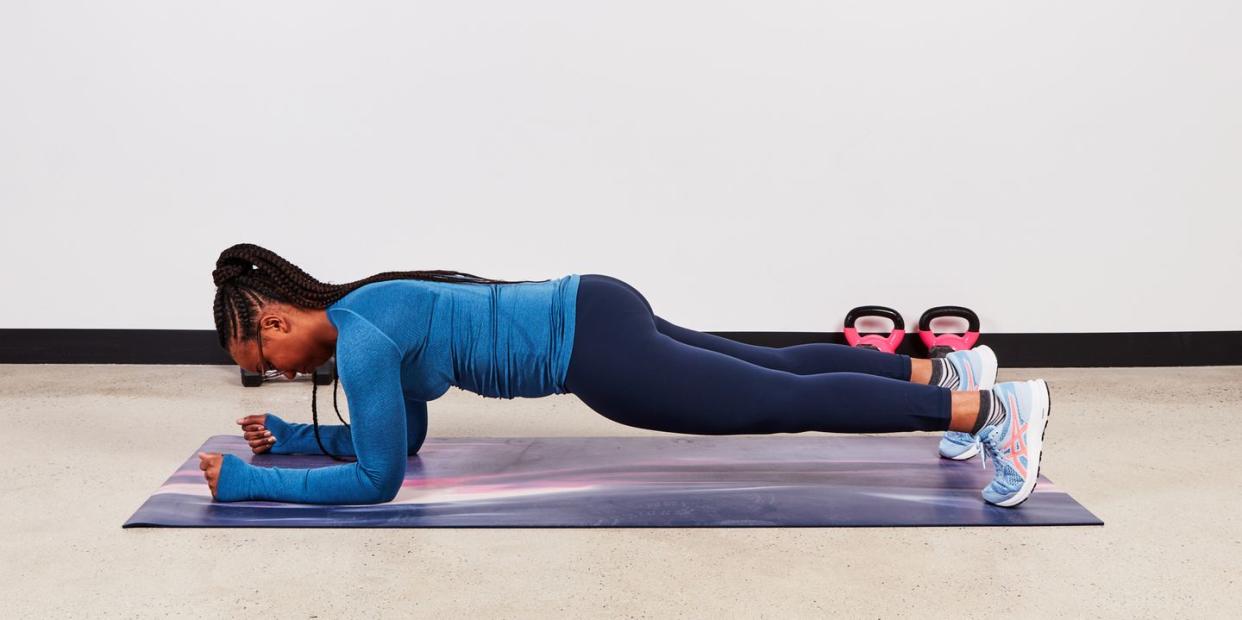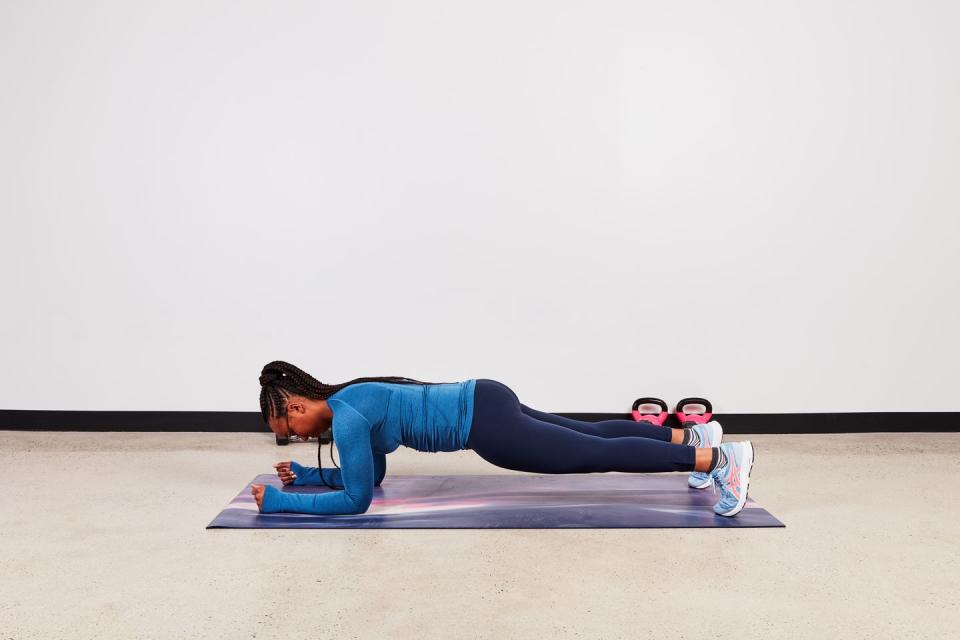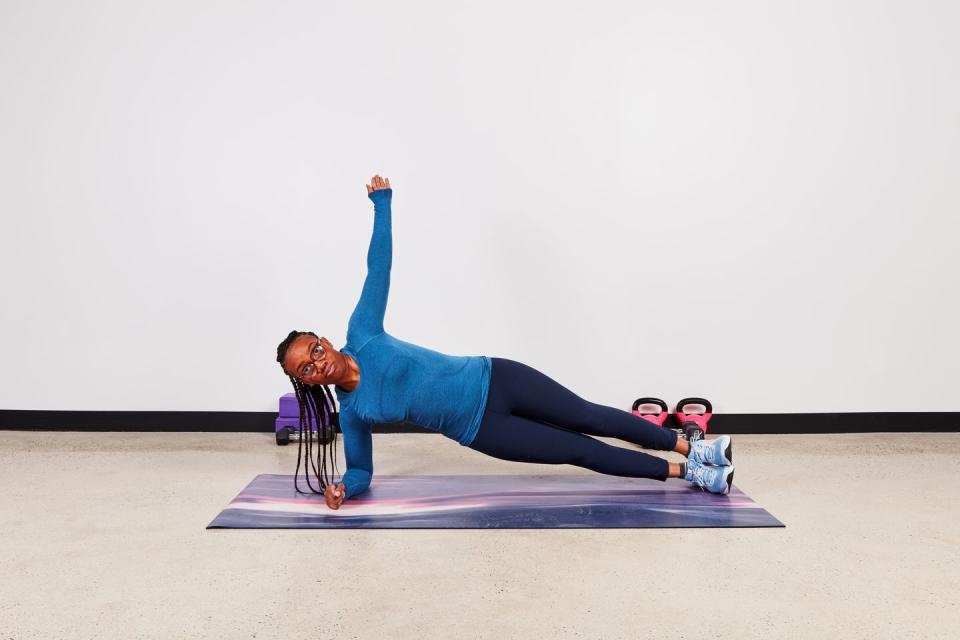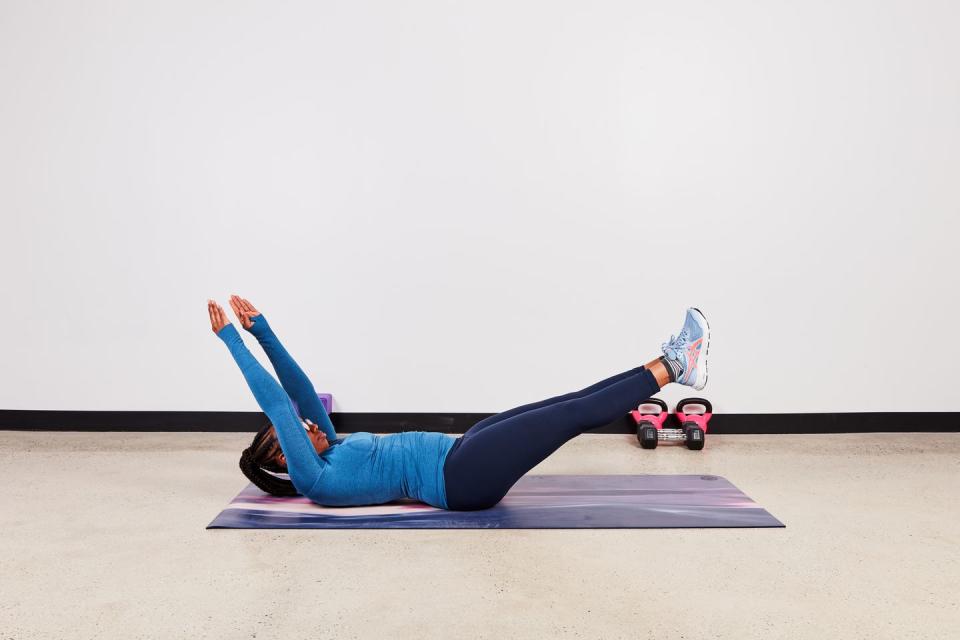Your Transverse Abdominis is a Crucial Muscle for Core Stability—Here's How to Strengthen It

The transverse abdominis—a deep core muscle that wraps around your middle—is one of the most important muscles for core strength and stability. And it’s especially important for cyclists to pay attention to, as it helps keep you stable on the bike. In fact, if it’s not strong enough, your cycling can suffer.
To help you learn why this muscle plays such a crucial role in your cycling, Ali Cook Jackson, founder of Never Give Up Training, NASM-certified personal trainer, and Ironman triathlete explains what you need to know about this part of your body and what transverse abdominis exercises you can do to build strength.
What is the transverse abdominis and why is it so important?
The transverse abdominis is the most important muscle layer in your abdominals, according to Cook Jackson. It’s also the deepest layer, wrapping around your entire stomach from front to back and extending between the pelvis and the ribs.
“If you think of a corset around your stomach or one of those back support straps, that’s basically all your transverse abdominals,” Cook Jackson tells Bicycling.
When cycling, if you don’t have a strong enough core, it can become habit to lean your body weight into your handlebars for support. Doing so puts added stress on the pelvis and spine, which can lead to imbalances, soreness, and injury.
“Even if you’re a triathlete or you’re a time trial rider, you don’t want to be leaning on your handlebars the entire time,” Cook Jackson says. “You want to be using those transverse abdominals.”
A study in the Journal of Back and Musculoskeletal Rehabilitation in 2015 proves Cook Jackson’s point: Cyclist participants with thicker transverse abdominis muscles were less likely to experience lower back pain. Another study, published in the Journal of Strength and Conditioning Research in 2007, found that when your core fatigues, it can alter cycling mechanics in a way that increases risk of injury, as it puts more stress on the knee joint. Finally, other research published in Clinical Anatomy in 2018 focused on cycling performance, suggests that short-distance cyclists focus on strengthening the core muscles, including the transverse abdominis, in order to improve power.
How to strengthen your transverse abdominis
Cook Jackson says targeting the transverse abdominis is easier than you think. Since they expand the entire trunk of your body, most simple core exercises will do the trick. However, she also believes that full body movements are the best way to strength train.
“Targeting one muscle at a time is doing you a disservice in terms of functional fitness. Full body movements, killing a million birds with one stone, and moving your body as one will be more beneficial—especially for cycling, because you’re using your abs while you’re using your legs while you’re holding yourself up, et cetera,” she explains.
6 Transverse Abdominis Exercises to Level Up Core Strength
Cook Jackson recommends the following routine to strengthen your transverse abdominis. You will need a kettlebell or dumbbell. An exercise mat is optional. Do each exercise for the number of reps listed below. Repeat for 3 sets.
Plank

Lie facedown on a mat. Tuck toes, place elbows right under shoulder, forearms on floor. Press forearms into floor, lift hips off the mat while engaging core to keep a straight back. Engage glutes and legs to prevent hips from lifting or dipping so your body forms a straight line from the top of your head down to your heels. Hold for 30 to 60 seconds.
Side Plank

Start lying on side with right forearm on the ground. Form a straight line from head to feet, stacking feet, knees, and hips on top of each other. Make sure left elbow is directly under left shoulder and place right hand behind your head. Lift hips up as high as you can and hold for 30 to 60 seconds. Repeat on the opposite side.
Hollow Hold

Lie faceup. Drive lower back into the floor, engaging abs. Raise legs off the floor, as little as possible while keeping them straight and keeping back pressed to the ground. (If back arches, lift legs higher.) Reach arms up toward the ceiling. If you feel stable, extend arms behind you, biceps by ears, creating a shallow U-shape with your body. Hold for 30 to 60 seconds.
Dead Bug
Lie faceup. Reach arms straight up toward ceiling over shoulders, palms facing away each other. Bring legs up, bend knees, making a 90-degree angle. Knees should stay directly over hips. This is your starting position. Slowly lower right arm behind you toward the floor, and simultaneously straighten and lower left leg toward the floor. Return to starting position. Repeat with the other side. Continue alternating for 8 to 10 reps per side.
Goblet Squat
Grab a kettlebell by the bottom of the handle and hold it at chest with elbows out slightly in front of body. Stand with feet just wider than hip-width apart. Send hips back and down to lower into a squat, keeping spine straight and chest lifted. Pretend you are going to sit in a low chair with great posture. Pause, then drive feet into floor and stand back up. Repeat for 8 to 12 reps.
Deadlift
Hold a kettlebell, dumbbell, or barbell down in front of you with both hands. Stand tall with feet slightly wider than hip-width apart, a slight bend in knees, shoulders back, and chest tall. Slowly hinge from the hips, sending butt straight back, while engaging core and maintaining a straight line from the top of head to hips. Engage hamstrings and glutes to resist the downward pull of gravity as the weight lowers toward to the floor. Lower as far as you can until you feel a pull along the backs of legs. Drive feet into floor to stand back up, hips moving forward. Repeat for 8 to 12 reps.
You Might Also Like

